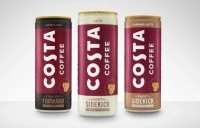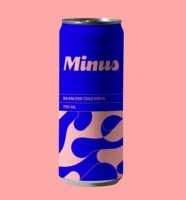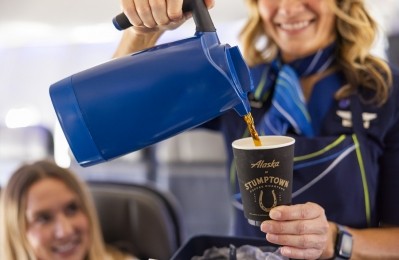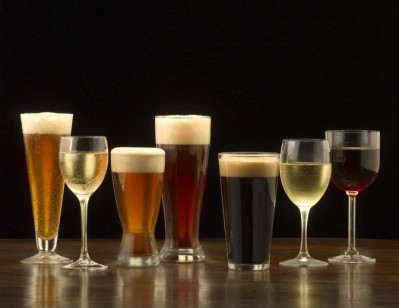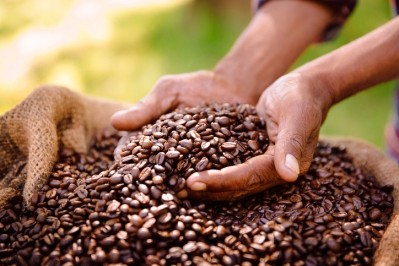What’s next in RTD coffee?
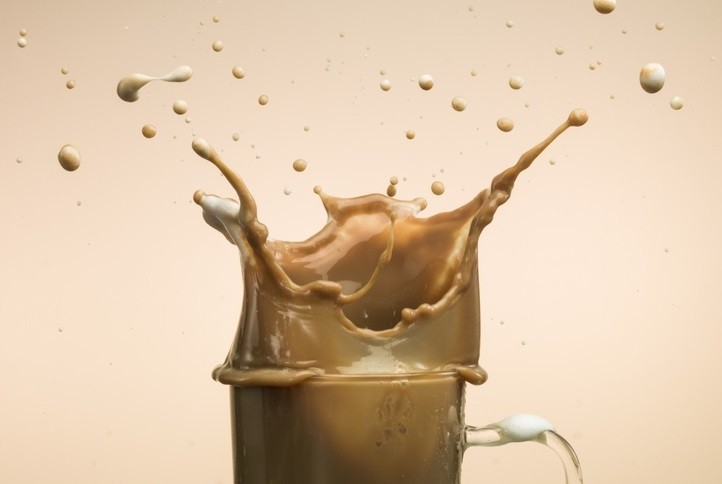
The RTD coffee category has found a sweet spot with busy consumers by offering a winning trio of energy, convenience and taste. Innovation abounds among entrepreneurs with small fast-growing brands who have spotted the opportunity to be the next big thing in the category.
But it's not just about entrepreneurs offering a fun new brand. A strong RTD coffee proposition is going to make increasing sense for any coffee company or FMGC company in the future as the preferences of the younger generation change. Mintel research shows that Gen Z consumers are 'significantly more likely' to drink RTD coffee than traditional hot brewed coffee and today only half of Gen Z consumers own a drip coffee brewer (vs 60% of all coffee consumers).
“Gen Z’s preference for cold coffee indicates key growth opportunities for RTD coffee brands and a need for roasted coffee brands to connect with Gen Z consumers or risk future declines,” says Caleb Bryant, Associate Director of Food & Drink at Mintel.
So how can RTD coffee brands connect with this new generation of consumers?
Big moves from Costa in the RTD space
Many large FMGC companies have been quick to recognize RTD coffee growth. PepsiCo has long enjoyed a partnership with Starbucks to distribute the coffee giant's RTD coffee in the US. More recently, Nestle and Starbucks teamed up to bring RTD coffee to Southeast Asia, Oceania and Latin America.
But one of the biggest splashes in the category comes from Coca-Cola, which – when it acquired coffee brand Costa – highlighted ‘great opportunities’ for Costa RTD coffee. “The Costa brand has potential for expansion into ready-to-drink coffee across many markets globally,” said James Quincey, CEO, as the company outlined its rational for the acquisition back in 2018.
While the RTD coffee category is booming in the US, Costa’s rollout has demonstrated this global potential. Given its stronghold in the UK and Europe, its RTD coffee rollout started in Europe and - although plans for Costa have been slower to materialize than expected due to the pandemic - the company has been exploring Asian markets.
In China, the market for RTD coffee is booming: making it the first international expansion market for Costa’s RTDs in 2021. Here, the company notes that the market is increasingly competitive with RTD coffee gaining favor with a large population of busy consumers.
Costa RTDs are currently available in China, Japan and Europe – with more markets to follow.
“The category is fast-growing, and we are excited to be a part of the future growth of it,” a Costa spokesperson told us. “Response to Costa RTDs has been particularly strong in China and Japan, and we consistently receive positive consumer feedback about the taste of our products. We believe our authentic coffee shop taste profile helps us stand out in this competitive category."
The company continues to aim to expand to more markets: notably with the upcoming launch of Costa RTDs in the US this year, following the launch of the Costa brand in the country last year.
Flavor opportunities
Flavor and function are growth opportunities within the fast-growing RTD coffee segment, according to Bryant of Mintel. “Consumers are most interested in indulgently flavored RTD coffees, indicating opportunities for RTD coffees that satisfy personal treat occasions.” The company's research suggests almost half of RTD coffee consumers are on the look out for indulgent flavors: highlighting the opportunity in this area.
Micah Greenhill, marketing director for beverages at ADM, agrees that indulgence is at the core of replacing the café experience in RTD coffees, seeing flavors such as chocolate peanut butter, salted maple, and cookies and cream trending.
At the same time, however, research from FMCG Gurus shows that 74% of global consumers say they like to go beyond classic indulgence with new and unusual flavors in coffee and tea products; with 77% saying they find limited edition flavors most appealing in the coffee category.
“In addition to seasonal favorites like white chocolate raspberry or chocolate mint, we also see a rise in regional flavor profiles,” said Greenhill.
“Purple yam (ube) lattes have a jewel-tone hue and an earthy sweetness, while blends with banana, vanilla and mango transport consumers to the tropics. We’re also seeing coffee coupled with unique botanicals and spices, like turmeric and spirulina.
"Another emerging trend in the RTD segment is an array of sparkling espresso tonics with bright and tart fruit flavors like blood orange, grapefruit and cranberry. The espresso tonic is reminiscent of the coffee lemonade trend we tracked a few years ago, demonstrating how the acidity of citrus fruits can be balanced by the bitterness of coffee or tonic water.”
That's not to say, however, that there isn't a place to appeal to coffee purists with RTD coffee, cold brew and single-serve coffee pods.
"Drinking unsweetened black coffee can allow the consumer to appreciate the complexity of flavor nuances from the specific roast level and geographical origin of the beans that impact the taste profile. From the caramel, nutty notes of a traditional cup of Colombian to the smoky quality of Indonesian brews to the mildly fruity and balanced profiles of Central America, there is no shortage of authentic coffee experiences to explore.
"We’ve also seen a resurgence of the espresso martini as a sophisticated after-dinner drink, which may translate to more ready-made espresso beverages available in store aisles, such as unsweetened Americanos or cortados."
Functionality and health
Energy has always been a key part of the proposition of RTD coffee. But then there’s a host of additional fortification and functionality opportunities to develop: brands are already exploring RTD coffee with protein, collagen, electrolytes or adaptogens.
That’s another huge opportunity for RTD coffee, says Bryant of Mintel. “35% of consumers are interested in RTD coffees that offer functional benefits in addition to energy. Functional innovation can bring RTD coffee into new consumption occasions and innovations that supplement/ enhance coffee’s inherit energizing properties (eg RTD coffee that provides sustained energy) or positions RTD coffee as a natural alternative to energy drinks.”
Consumers are often also on the look out for an RTD coffee that fits in with the health and wellness goals. Sugar-laden, high-fat milk-based products can be a turn-off for health-conscious consumers: expect, therefore, for an increasing number of brands to prioritize sugar reduction (35% of consumers surveyed by Mintel said they would be interested in buying RTD coffee with low sugar – akin to the level of interest in functional benefits).
And then there’s the growth of the use of dairy alternatives: seeking to both reduce fat content and offer plant-based credentials to their consumers (Around 25% of RTD coffee consumers are looking for non-dairy offers, according to Mintel).
Coffee... but not as we know it...
Pushing the boundaries of RTD coffee is the question of the integral ingredient itself. US-based Sunup Green Coffee makes ‘smooth, high-energy brews’ from organic green coffee beans – raw coffee beans that have never been roasted and thus promise a more potent brew and smoother taste than traditional coffee.
And then there’s a whole new world of RTD coffee that isn’t actually coffee as we know it.
San Francisco’s Minus Coffee is getting rid of coffee entirely: instead taking ingredients such as chicory root, dates and lentils and putting them through a fermentation process that aims to replicate the taste and aroma of cold brew coffee but in a more sustainable way.
While currently focused on hot coffee, Dutch start-up Northern Wonder has developed a coffee alternative made from non-tropical ingredients in an effort to offer source ingredients closer in the Northern Hemisphere: including barley, rye, chickpea and chicory (its R&D teams are currently working on adding cold brew to its portfolio of filter blends and capsules).
We don't want to cut back on coffee
Despite an era of inflation and economic uncertainties, consumers are, for the main part, not looking to give up coffee.
But they are changing how they consume it: primarily by trying to replicate café experiences - whether hot or cold - at home. That should spell good news for RTD coffee in retail - and indeed present an opportunity for the category to embrace.
That's providing, of course, that worsening economic conditions don't eventually push consumers to cut back on coffee. And, as always, if that does transpire to be the case, it will be the best brands that survive - and thrive.
